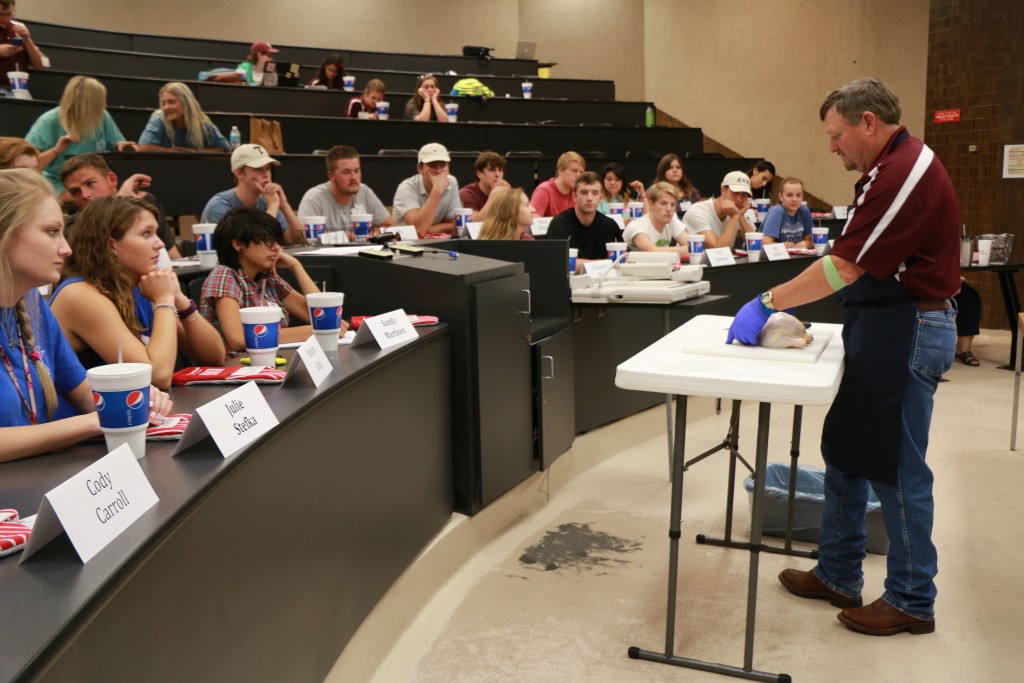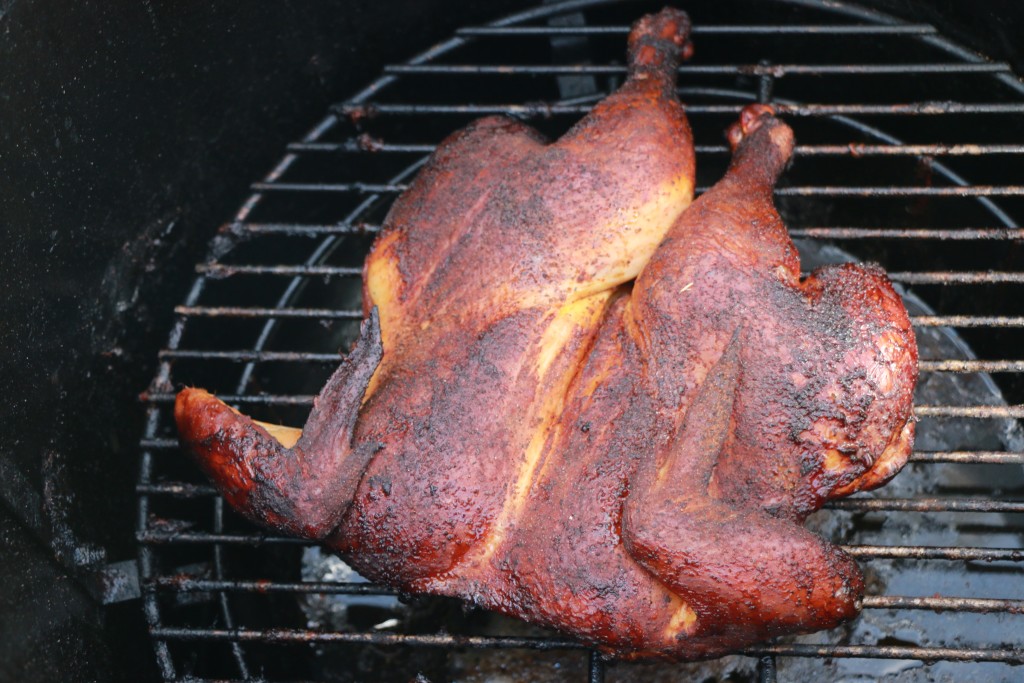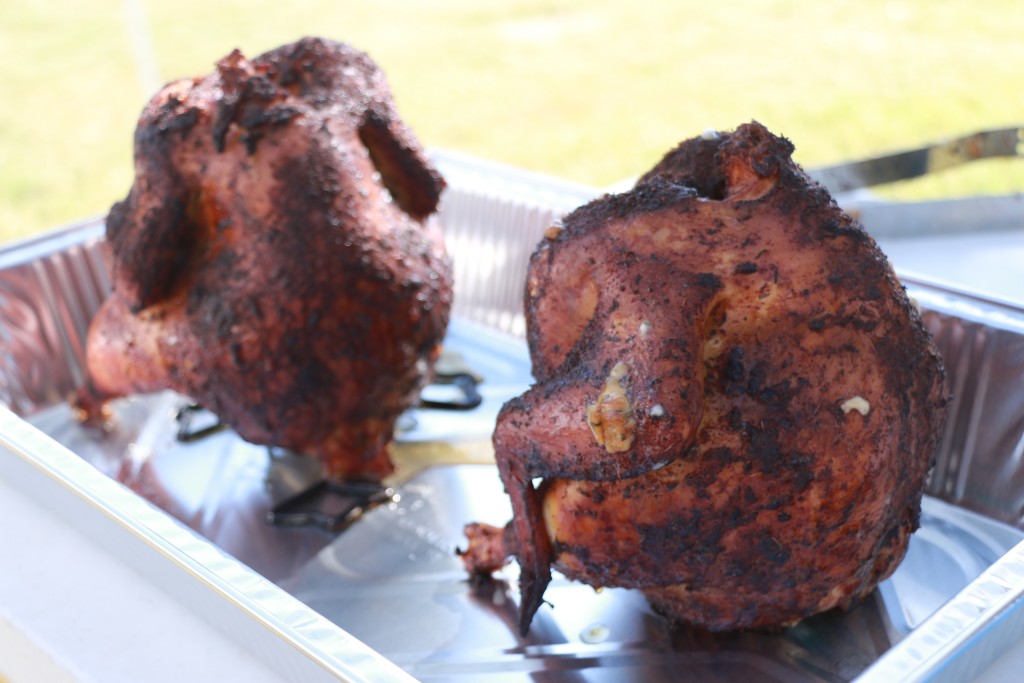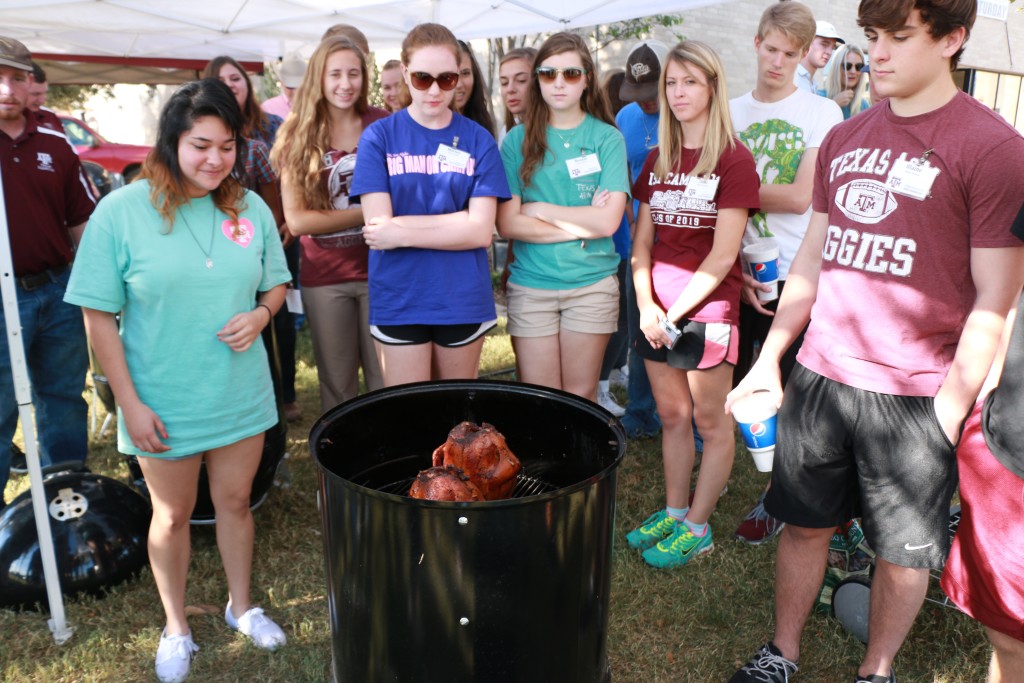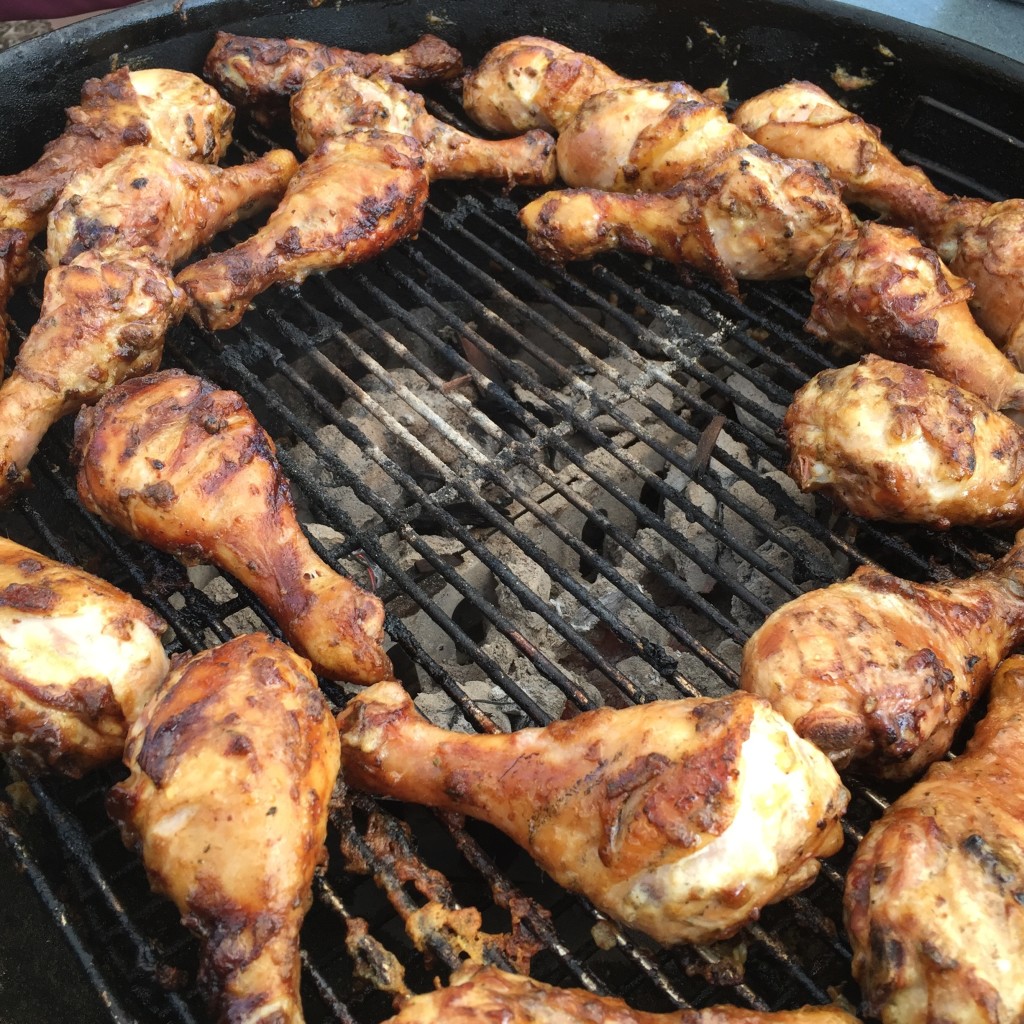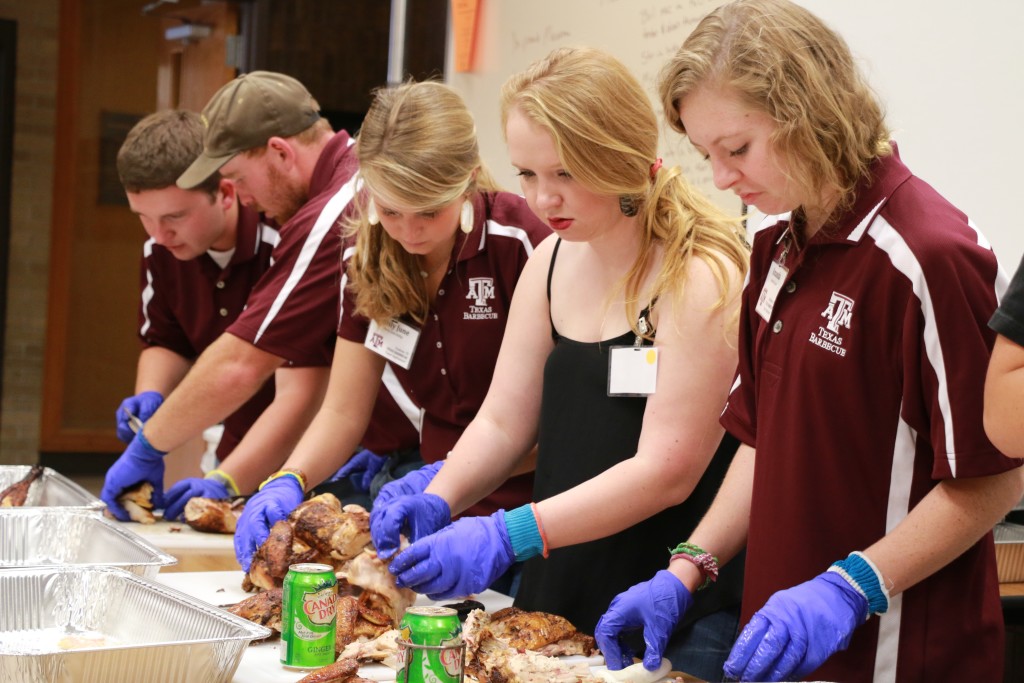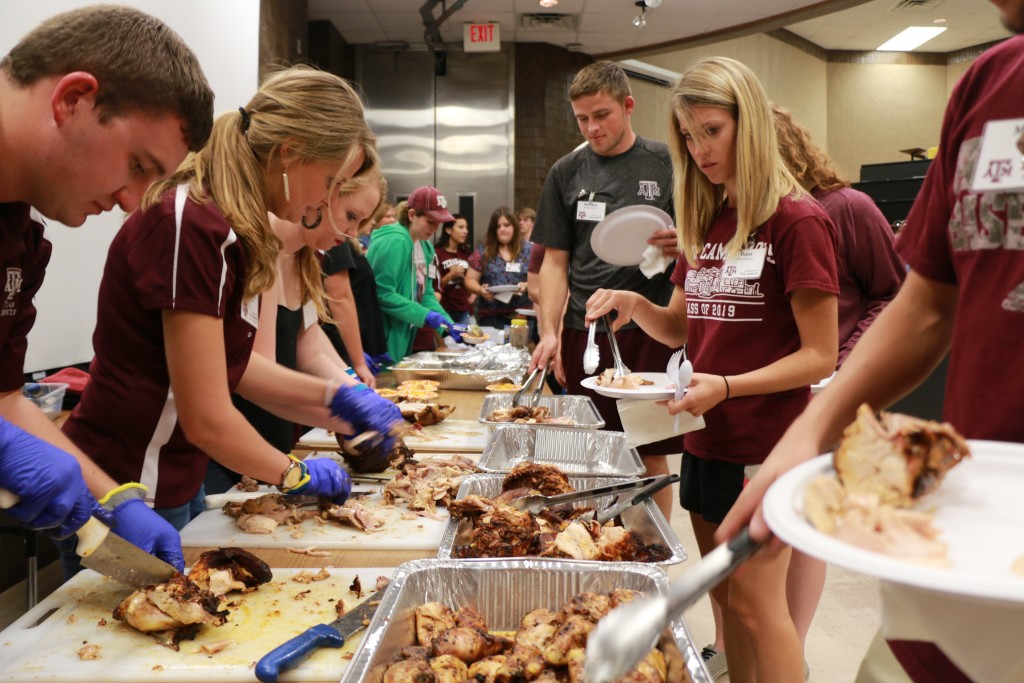This week’s ANSC 117 Texas Barbecue class focused on chicken. Chicken is one of the easiest meats to cook, and careful attention to preparation and cooking will result in a great eating experience.
Ray Riley led the class discussion and covered the different types of preparation most commonly used when barbecuing chicken. Ray recommended purchasing whole fryers, which are versatile in how they can be prepared. He showed how to take a whole fryer and convert it to a butterflied chicken by removing the backbone and breast bone and splaying the chicken out. In addition, Ray showed how to cut a chicken into halves, quarters, and individual pieces.
Two great ways of preparing whole fryers is by placing an opened soft-drink can in the body cavity to cook the chicken in the “beer-can-style” form. We used a can of ginger ale for our source of soft-drink. Rotisserie-style chicken is a great way of cooking chicken these days, and we used the Weber Kettle Rotisserie and indirect heat to cook some of the fryers.
The last method of cookery was the Ranch Dip drumsticks where the drumsticks were covered with mayonnaise before being coated with Ranch Dip. The protein from the mayonnaise helps with browning, and the fat helps to keep the drumsticks moist. This is one of the tips we have learned from the poultry specialists during their session of the Barbecue Summer Camp.
All of the chickens were brined overnight before they were cooked (recommend 24 hours for whole chickens, 10 hours for cut-up pieces of chicken). This is the brine we used:
- Gallon water
- 1/2 cup Kosher salt
- 1/2 cup sugar
With the exception of the Ranch Dip drumsticks, we used a simple combination seasoning for the rest of the chicken we cooked.
Here are some cooking tips for chicken:
- Cook low and slow using indirect heat (approximately 225°F)
- Cook bone-side down (for pieces or butterflied chicken). Place chicken close together, but do not overlap pieces.
- Avoid flare ups that can burn the skin.
- Cook chicken to 165°F internal in breast and thighs to ensure food safety. Cook to 175°F in legs and thighs to reduce the redness around the bones.
Food safety is always important when preparing barbecue, but it is especially so when cooking chicken. Here are some points to consider:
- Use different cutting boards for raw and cooked products.
- Wash hands, countertops, cutting boards, knives, and handling utensils with hot soapy water.
The key to preparing the best chicken possible is to not overcook it. Using a thermometer to ensure that the proper endpoint temperatures are met along with using indirect cooking methods so that temperatures in the 225°F range are used will ensure great, juicy chicken.

